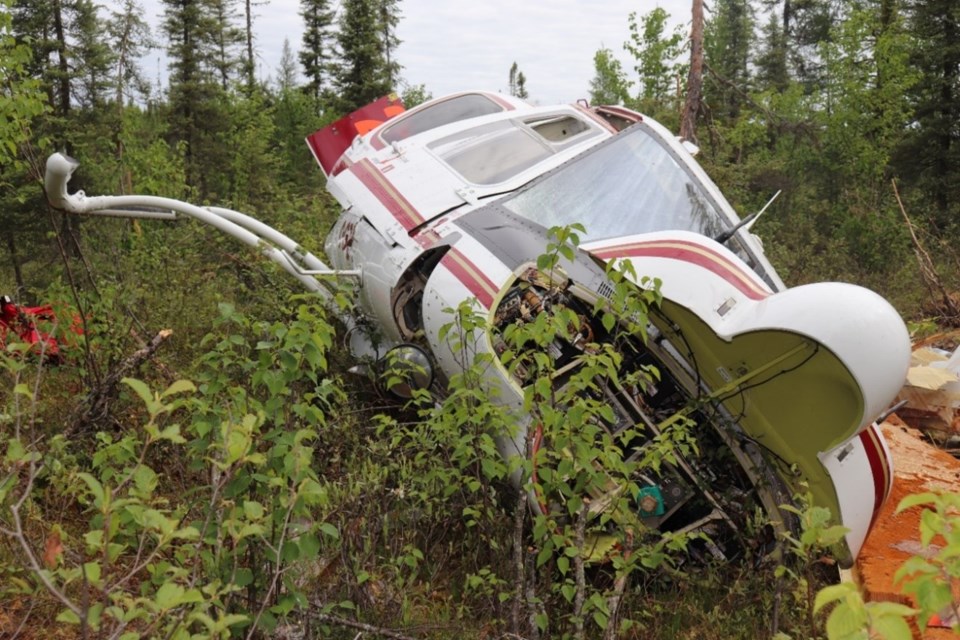THUNDER BAY — Transportation Safety Board investigators found a dislodged retainer ring in the tail rotor drivetrain of a helicopter that was heavily damaged in a forced landing near Nipigon in June 2021.
This led to a sudden loss of tail rotor thrust and loss of control that caused the pilot to transmit a Mayday call as he was returning from firefighting duty to the Ministry of Natural Resources and Forestry fire base at Nipigon.
In a report issued Tuesday, the TSB said that as the helicopter began to spin, the pilot made three attempts to use some engine power to fly the machine to a suitable landing area near a small lake.
The helicopter was descending at 1000 to 1,500 feet per minute.
The pilot was able to slow the spin rate, and took steps to try to cushion the landing, but he suffered serious injuries on impact with the ground.
There was no fire.
According to the TSB, the twin-engine Bell 214ST was 39 years old and had recently been re-assembled upon return to Canada after operating overseas.
After maintenance and inspections were completed, the Ottawa company that owns it sent it to Dryden for service with the MNRF at the beginning of June.
The TSB said the helicopter had no known deficiencies before the June 7 incident.
"For an undetermined reason, the retainer ring was dislodged from the splined coupling," the investigators' report states.
After finding no signs of wear on the retainer ring, they considered the possibility that a tiny bit of debris somehow became trapped between its layers and prevented it from seating properly.
However, an examination of the ring failed to determine whether a foreign object had been present.
Whatever the cause, its dislodging had a chain reaction that ultimately resulted in the loss of tail rotor thrust and the loss of yaw control.
The TSB report outlines safety actions that were taken as a result of the incident:
- the company's three other Bell 214STs were grounded pending inspection of their tail rotor drivetrains to verify correct installation
- the Bell 214ST daily inspection was amended to require the opening of an additional access panel to facilitate the inspection of the engine-deck-mounted tail rotor driveshaft hanger and a coupling assembly
- a five-page handout was added to the company's Bell 214ST training course, emphasizing inspection areas
- a memo was distributed to all pilots reminding them about ensuring sufficient airspeed to maintain helicopter control during an emergency involving the tail rotor
- the Emergency Equipment and Procedures Ground Training curriculum now includes training in loss of tail rotor effectiveness and total loss of tail rotor thrust
The TSB also issued a safety message saying "since some components, such as a seated retainer ring, may be difficult to view, the use of visual inspection aids (such as a mirror) and measuring tools may be warranted during installation and subsequent inspection."



